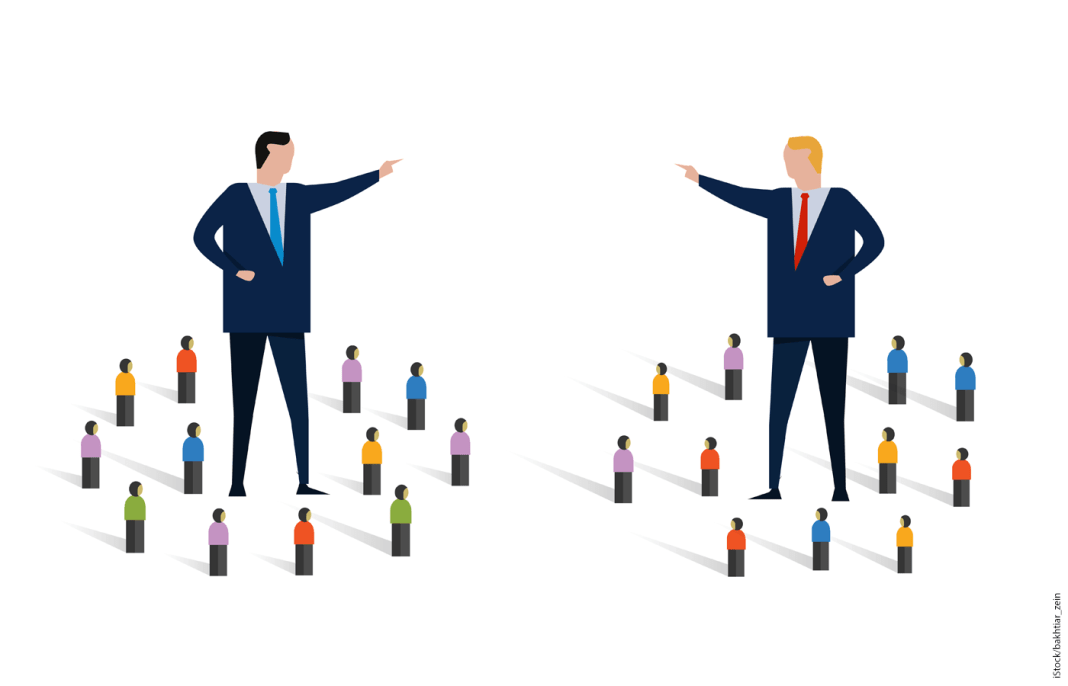
As regular readers know, I’ve a passionate interest in how educators model and teach the norms of healthy, civil disagreement. Heck, Pedro Noguera and I wrote a whole book on this and spent the better part of two years discussing this topic with leaders and groups around the nation. That’s why I’m such a fan of the Constructive Dialogue Institute (CDI), founded by Jonathan Haidt and Caroline Mehl in 2017 to develop tools, resources, and frameworks to support this work. Well, CDI has conducted a series of teacher interviews that offer some insight into how polarization impacts classrooms. I thought readers might be interested in the takeaways, and Jake Fay, CDI’s director of education, was kind enough to share some thoughts. Here’s what he had to say.
—Rick Hess
Over the past few years, schools have been the site of fierce political conflict. While the U.S. has a long history of conflict in and about schools, things seem exceptionally intense and not in a good way. It feels like everybody is butting heads with everybody else. Parents, teachers, school leaders, teacher unions, community members, students, state legislators—this entire post could easily be just a list of conflicts among different stakeholders in schools. Everyone is certain they are on the side of the angels … and that the other side is most definitely not. And the volume is turned up to 11.
Compounding typical disagreement about schools is the rise of polarization across the social and political spheres of our country. Echo chambers reinforce singular perspectives, quash dissent, and make it nearly impossible to hear reason from an opposing viewpoint. Even worse, our attention-based media ecosystem prioritizes the loudest voices and the hottest takes. So, when you do hear the opposing side, you tend to get the version that gets the most clicks.
It all adds up to a sobering reality for schools. Polarization is distracting our schools from their most fundamental purpose: educating children.
A new series of interviews prepared by my organization, the Constructive Dialogue Institute (CDI), provides some insights into how educators see polarization affecting the work of schools. We conducted interviews with 14 public school teachers from diverse regions and grade levels, and they offer snapshots of classrooms, school board meetings, teacher interactions, and communications with parents.
One teacher, for example, noticed how the calculus behind a routine decision to choose a textbook has changed as America has become more politically divided. The first questions the district considered weren’t about student learning but rather about the politics of the decision. “How can this be viewed through the lens of polarization? How’s the community going to receive this? Who could potentially look at this textbook? What state did it come from?”
It’s not just textbook choices, either. We found that educators are increasingly experiencing a chilling effect on classroom dialogue. On the one hand, they feel a sense of increased scrutiny over their work that leads them to pull back from leading classroom discussions out of fear of reprisal. This can come from multiple sources—state legislators, community members, or parents—and from both the right and the left. On the other hand, when educators do engage in discussions, their attempts feel more and more likely to devolve into name-calling among students. “It just became safer to just avoid current events altogether, even if it was something major,” one educator reported.
Pulling back from discussion stings for educators. Another educator we spoke to expressed feelings of guilt for avoiding classroom dialogue. “I hate to admit this, but I’ve been starting to walk away from discussion in my classroom. I’ve been doing more and more ‘Watch the video, read the book, answer the questions, wait for the bell, leave my classroom.’” For the teachers, avoidance lowers the pressure. But if the alternative is disengagement, the cost is steep.
We need to ask ourselves: Is this the direction we want to go?
The bad news is that polarization is not going away anytime soon. It’s a complex problem that needs to be addressed at many levels. Educators will increasingly feel the pressure as we further sort, align, and consequently distance ourselves by ideology. Still, all is not lost. There are ways educators can address how polarization reaches into their schools and classrooms.
The trick is to tackle the part of the problem educators can control. Things like social media, political campaigns, and news media drive polarization at a scale no single educator can truly address. But in their classrooms, schools, and communities, educators can begin to repair fractured trust and develop understanding across differences. They don’t have to avoid discussion and miss out on opportunities to develop students’ critical-thinking skills. They can help their students develop the mindsets and skills they need to navigate differences of opinion and belief. One real way forward is for educators to teach students how to engage in constructive dialogue.
Later this week, in another letter, I’ll explain why constructive dialogue is a viable solution. I’m not going to claim that building practices of constructive dialogue in classrooms and schools will make all disagreements and conflicts related to polarization disappear, as there are real differences of opinion about schools that we aren’t going to resolve overnight. But we shouldn’t be afraid of those disagreements or avoid them. We can intentionally build capacity for discussion and disagreement and we can change how we navigate ideological tensions. Doing so will help us all get back to making the best educational decisions for all our children.
Frederick Hess is director of education policy studies at the American Enterprise Institute and an executive editor of Education Next.
This post originally appeared on Rick Hess Straight Up.
Last updated August 11, 2023



